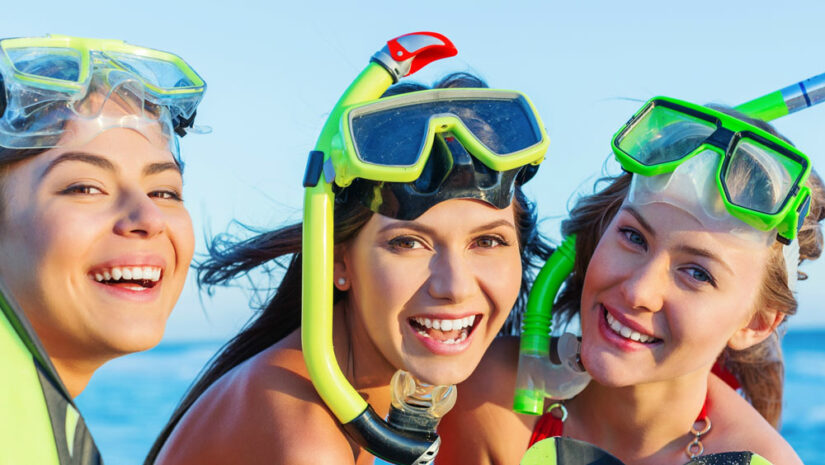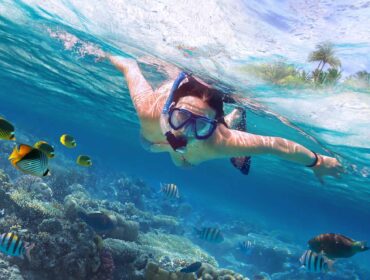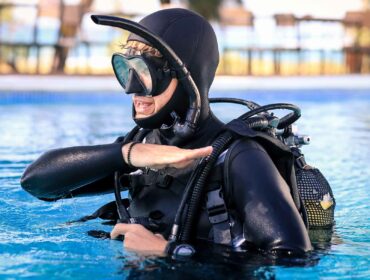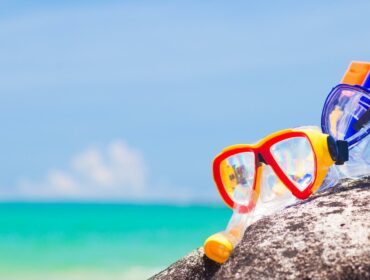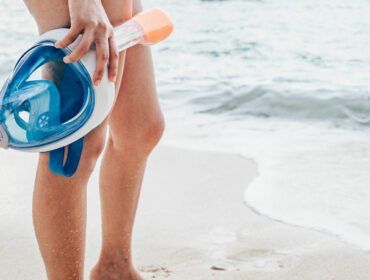It’s amazing how many types of snorkels there are out there. It holds its own as one of the most basic items of diving equipment, and its prices vary from $10 up to the $100 range. This is really fascinating especially when you consider that a snorkel is, in essence, a simple plastic tube. But thanks to modern technology and design, manufacturers have pushed this humble underwater breathing device to new limits in order to enhance your snorkeling and diving experience. Enter, the dry snorkel.
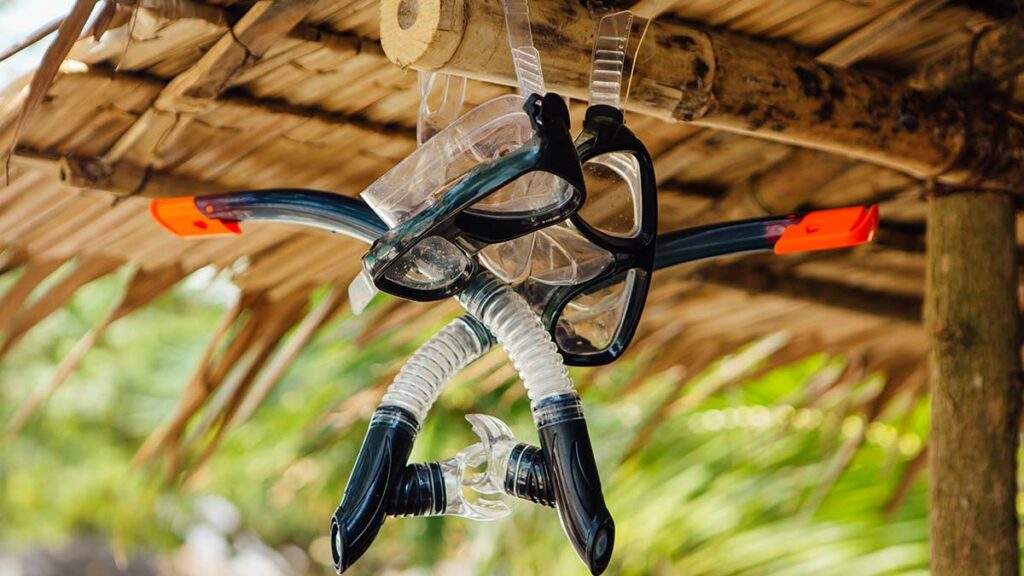
Semi-Dry Snorkel vs Dry Snorkel
Semi-dry and dry snorkels have been a source of intrigue for many beginners and aspiring divers. Additionally, semi-dry snorkels are designed to keep water out by using a splash guard at the top of the tube. If water does get inside, usually due to big water splashes or waves, it features a one-way purge valve that lets you flush water out easily.
On the other hand, a dry snorkel is characterized by a specialized valve mechanism on top of the tube. This is called a float valve—it seals out water and air and keeps the inside of the tube dry when you submerge your head and the top of the snorkel goes below the waterline. But while it prevents water from entering when submerged, the valve does not seal water out when the top of the tube is above the waterline, which is why dry snorkels typically also feature splash guards.
Dry snorkels usually have a purge valve system on the bottom in case water does enter the tube when you take the mouthpiece out or when the mechanism fails to seal water out (which shouldn’t happen with high-quality dry snorkels).
Setting itself further apart from classic snorkels, today’s dry snorkels also feature a more flexible tube that’s sometimes contoured so it’s less tiring to keep biting on the soft silicone mouthpiece, plus it doesn’t snap back when you let go of it.
For extended surface swimming, there’s also the full-face snorkel mask, which features a dry top snorkel extending upwards from the top of the mask. Instead of breathing through a mouthpiece, the swimmer can relax the jaw and breathe normally inside the mask.
Advantages and Disadvantages of Using a Dry Snorkel
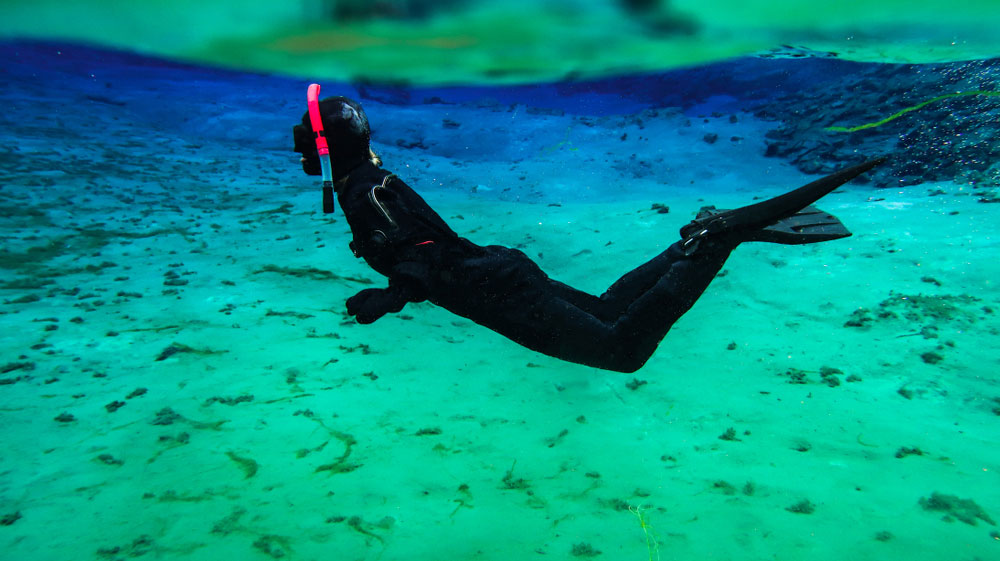
As intriguing as they may sound, there are some drawbacks to using dry snorkels. When scuba diving, the air in the dry top snorkel can add buoyancy and cause drag, making it difficult to move underwater and potentially cause leakage as it tugs at the mask strap. This makes semi-dry snorkels more suitable for freediving.
A downside of semi-dry snorkels is that some of them are built with mechanical splash guards that have internal moving parts. The problem with this is that these parts tend to jam when too much sand gets inside the snorkel. There is also the possibility that the snorkel will get entangled and endanger your life when diving near wrecks, around coral reefs, and inside caves.
Despite these drawbacks, which seldom occur with good quality snorkels, a dry snorkel works wonders for helping you conserve energy when swimming on the surface or while waiting for your dive boat to pick you up. It also eliminates the need to exhale strong bursts of air to expel water from the tube (like you would with a classic snorkel)—which is especially convenient when dealing with continuous waves or when you’re at the end of an exhausting dive.
Recommended Products
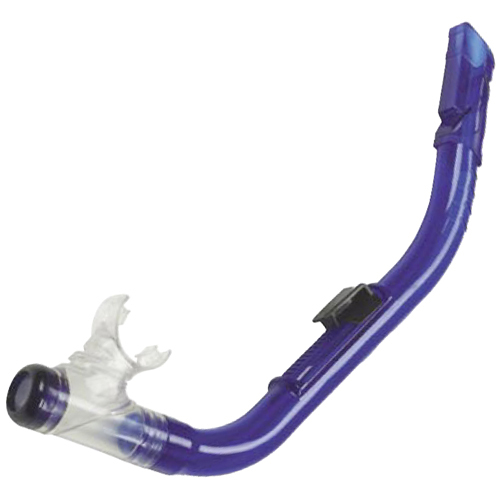
If you like snorkeling and free diving, you don’t necessarily have to use the same snorkel. Both are relatively cheap, so buy two snorkels—one dry top snorkel and one semi-dry snorkel—that are of good quality so you won’t have to skip or have difficulty with either activity. Below are just some of our recommended products, available on LeisurePro.
Dry Top Snorkels
Semi-Dry Snorkels
For more options, you can check out our collection of dry top snorkels, semi-dry snorkels, and full-face snorkel masks.

